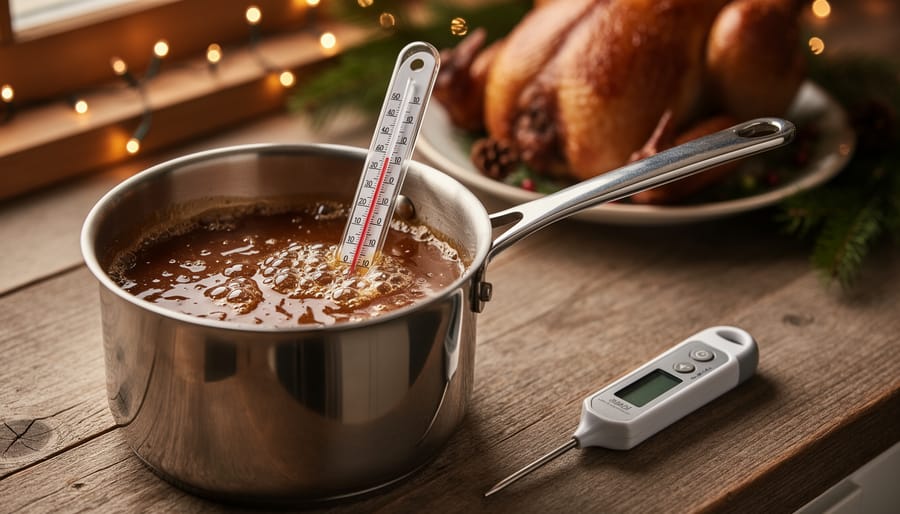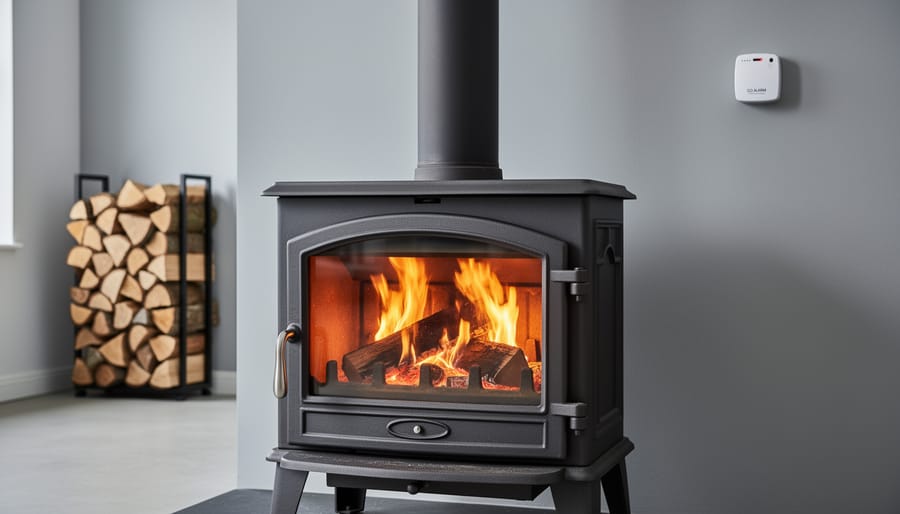The natural gas range is among the more well-known types, and a significant portion of us are under the impression that propane can be used on your stove that is designed to use natural gas. There is a possibility of using propane gas in the natural gas stove however, it’s a risk and could cause an enormous flame.
Trying this can be very dangerous if the stove is not suitable for propane use. What happens if you decide to try using propane? In this article, we will learn more about the dangers and safety risks of using propane gas in natural gas stoves.
We will also explain the benefits of switching your gas stove to propane. By doing this, you will be able to ensure you can use your propane stove using the correct flame dimensions. This will lower the risk of explosions or burns.
If you use propane in a natural gas burner, the flame is likely too big. This is because the orifice jet used for natural gas is significantly bigger than that used for propane. This can cause burn injuries, damage to your home and stove, and an explosion.
What Happens If You Use Propane On A Natural Gas Stove?
If you attempt to use propane in a natural gas stove, it is unlikely that you will be happy with the results. A variety of scenarios could happen if you use propane on a natural gas stove. Let’s discuss them one by one.
Nothing Might Happen
Nothing may be happening. Perhaps you have discovered a way to alter the jet’s orifice and add components to ensure the flame doesn’t get too big.
However, this does not eliminate the possibility of a propane leak or the propane-causing pressure that triggers blowback. The blowback can draw the flame into the propane hose and cause the tank to burst. If the tank is large enough, this could be fatal.
Fire Blowback
Too much propane can be released at once. This could cause the creation of a huge amount of pressure on your stove’s components. If you light it, this can trigger a variety of issues, like the stove exploding or the flame bouncing back through the tube and into your propane tank, which can cause an explosive explosion.
Overly Large Flame
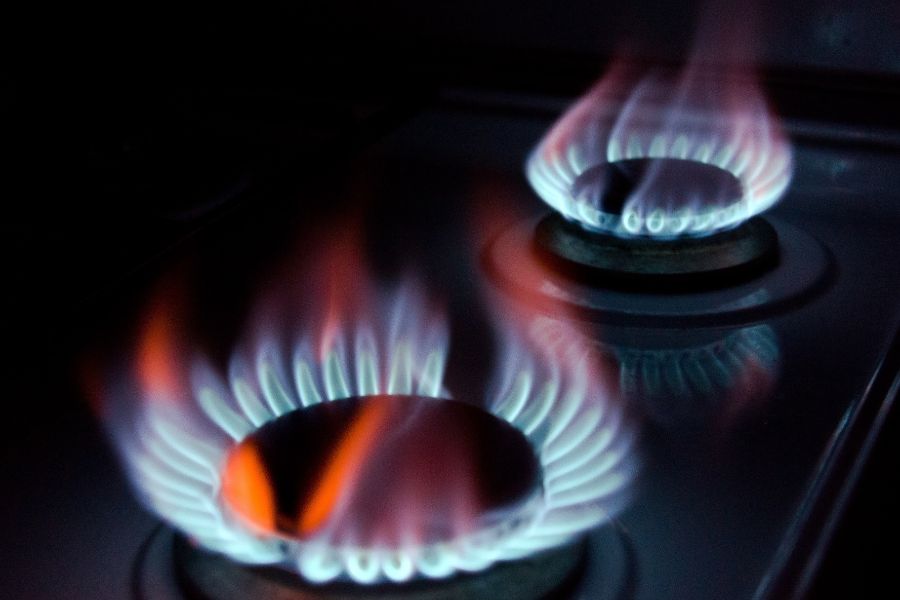
A propane pipe made for natural gas with lower pressure can cause an excessively large fire. The flame will grow and could cause an explosion. This is because the orifice jet for natural gas is larger than the one designed for propane.
The result is that there isn’t any reaction of carbonaceous soot formed by the propane. The partially combusted propane can create hazardous carbon monoxide gas and soot.
There will be an incredibly more intense flame. It could result in an eventual fire in your home, the stove being destroyed, and third-degree burns. The flames may be bright orange, creating soot on your cookware.
Inconsistent Lighting
Another thing to bear in mind is the amount of fuel. Because propane is of heavier density, it will require more significant pressure to enable it to burn the fuel thoroughly. A wrong ratio of air/fuel can cause inconsistent lighting and damage.
Carbon Monoxide Poisoning
If you are trying to use propane in a natural gas stove, it could cause carbon monoxide poisoning because of gas combustion that is not complete, as well as high pressure and gas leaks. Carbon monoxide is a non-color non-odorless gas that causes poisoning when breathed.
How Can You Identify Whether Your Gas Stove Operates on Propane or Natural Gas?
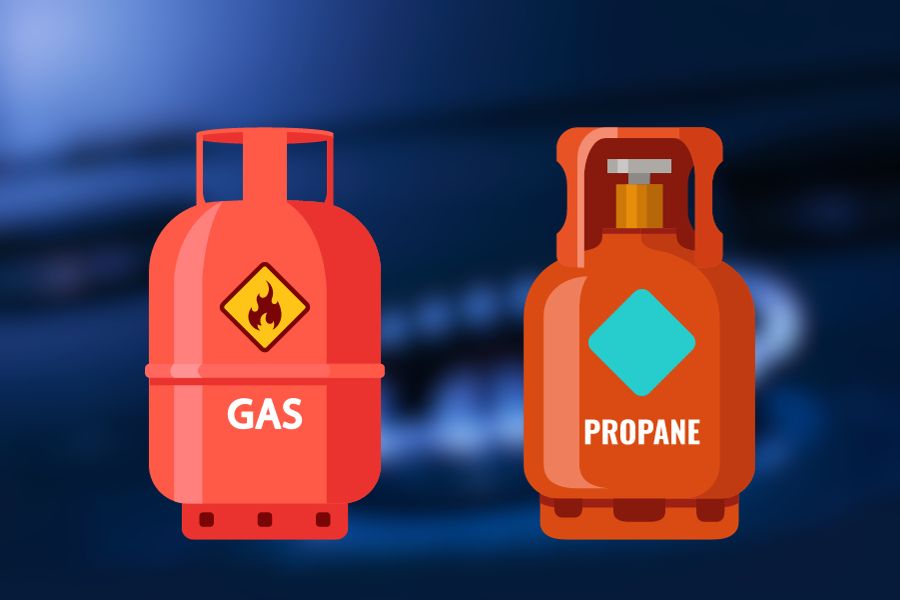
Go through your appliance’s instruction manual to find out if your stove is intended to operate on natural gas. If you cannot locate it, visit your stove manufacturer’s website for a download version.
If you are aware of the procedure, you can unhook the burner and look at those jet caps. They are small screw-in caps with holes drilled into the inside of them. The top of the orifices will reveal if the cap is intended to be used with propane or natural gas. Small holes are designed to accommodate propane, while larger holes are designed for natural gas.
For certain stoves, look at the broiler area as well as on the oven section’s door for any stickers from the manufacturer. Most likely, there is a sign to indicate that the oven is built to use propane or natural gas.
Converting A Natural Gas Stove to Propane
It is crucial to speak with the appliance manufacturer to determine the feasibility and the requirements to convert gas. In certain instances, buying a new appliance specifically designed to use propane gas might be economical.
To switch from propane to natural gas, you must exercise extreme caution. A majority of gas appliances come with converter kits. If not, You can purchase conversion kits from the manufacturers’ store. If you are likely to find that it’s not convertible, it’s best to call the manufacturer to verify.
To convert the natural gas stove to propane, it is necessary to modify three things:
The Pressure Regulator
The pressure regulator is responsible for keeping the internal pressure adjustment for the gas. Certain gas stoves come with an adjustable pressure regulator that you can adjust by taking off a cap or flipping the plunger. Other stoves may require you to set a different regulator at the right pressure, either electronically or mechanically.
The Air Mixer
An air mixer is also known as an air shutter. Certain gas stoves change by turning the air shutter off. It is best to consult the manufacturer on how to change.
The air shutter might be located in the valve hood or knobs controlling the burner. You should turn off the knobs for the burner, then remove them, find the tiny screw for air adjustment, and set it in the correct position.
Orifices
Orifices regulate the amount of gas that is allowed to reach the burner. There are different sizes for each gas. Replace the burner’s orifices with smaller holes to ensure the proper flow of propane gas.
Note – A professional must perform the switch to avoid unintentional risks. Experts have the knowledge and experience and can alter the proper pressure setting.
Instructions For Converting Your Natural Gas Stove to Propane
If you have decided to convert your natural gas stove to propane, here are some basic steps:
- Get a conversion kit. When you first buy your appliance, it could already have an existing conversion kit. If you have an older appliance, buying one from the stove manufacturer is necessary. Follow the instructions provided in the conversion kit. Look up the manual of your stove to ensure that you are doing it in a safe manner.
- Change the pumps. The most significant modification you can perform is to replace the larger orifices with smaller ones so that less propane gets fed through. Propane will be a source of energy for heating, so it won’t take an enormous amount of fuel in order to prepare your meal. It is advisable to get a professional’s help for this conversion stage to ensure there aren’t any leaks of propane.
- Change the stove settings. After changing the orifices and valves, you will need to alter the settings for the valves and orifices. This will ensure that everything is working correctly and that you can enjoy risk-free baking and cooking.
Benefits of Using Propane
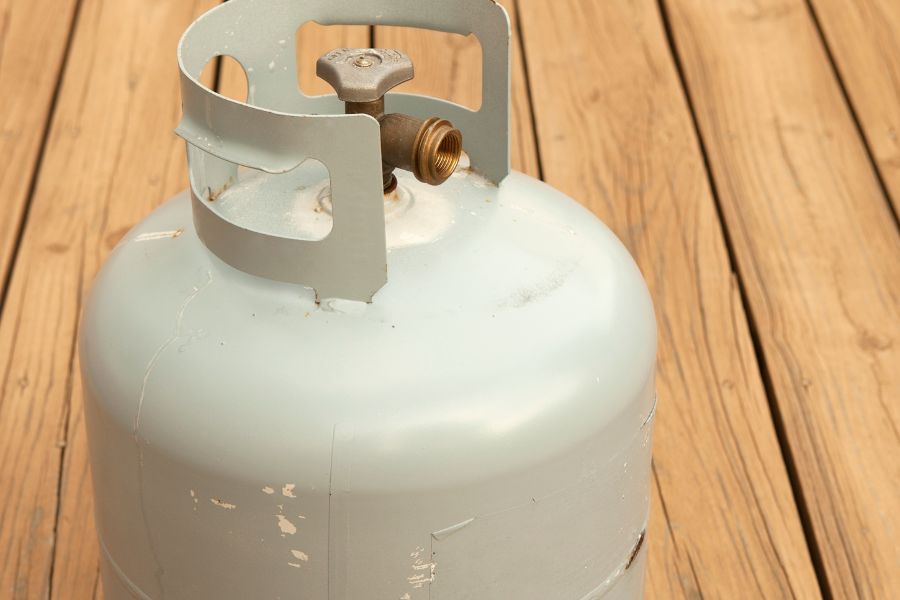
There are numerous advantages to using propane instead of natural gas. Here we have listed a few of the benefits:
Propane Is Efficient
Compared to the energy content of natural gas, propane has two times the amount. Therefore, cooking will consume less propane in comparison to natural gas. This does not require a reduction in the heat level because you will be able to maintain the same temperatures.
More Savings
Since you will need only half the amount of fuel when using propane rather than natural gas, you will likely save significant cash on fuel. Even if you are within an area where propane prices are double, the price won’t alter because you only use half the fuel. Therefore, getting a great price on propane can mean more savings!
Pay Per Use
Another advantage of propane over natural gas is that you can pay per use. You can schedule replenishment of propane when it is available at a lower cost and select the best providers to fill it up with.
How To Convert Natural Gas Stove to Propane
- A conversion kit is typically located on the stove’s back or front. You can find the fittings to convert in a bag of plastic glued on the stove. But, if your stove does not come with one or is unsure, you must purchase a conversion kit from the manufacturer.
- The regulator has to be transformed. You will need to change the regulator’s pressure to a pressure of 4 inches required for natural gas stoves into 10 inches.
- Orifice sizes vary to suit each size of the burner. The burner size will determine the dimensions of the orifices you will use. As a result, you may need to install four orifices if you own four different-size burners.
- Make adjustments to each of the burners to the set point for simmering. You will need to offer the minimum adjustments for each burner to its simmer level. Ensure the flame is low but not so low that it disappears when it switches from high temperature to low heat or high to lower.
- Always be sure to check for leaks. Use a spray bottle filled with soapy water to test any gas lines you messed up. Spray the soapy liquid on the line and look for bubbles. If bubbles start to appear the same way, there is a gas issue, and you must either change the lines or get an expert to repair them.
- The conversion cost could range from $150-$200. To convert a gas stovetop with four burners, expect to shell out $150-$200 to get professional assistance. This is about one hour of labor.
Also read:
- How to Convert Natural Gas Stove to Propane?
- Are Natural Gas and Propane Interchangeable?
- How Much Does a Stove Weigh
- How Hot Does a Stove Top Get
- Do Electric Stoves Use Gas?
- Can I Use Induction Pan on Gas Stove
- Do Home Buyers Prefer Gas Or Electric Stoves?
- Do Gas Stoves Have Pilot Lights?
- What is Auto Ignition Gas Stove?
- Can You Put Gas Stove Grates in Dishwasher?
- How To Clean Electric Stove Coil Tops?
- Do Gas Stoves Need to Be Vented
- Griddle for Glass Top Stove
- Butane vs Propane Stove
Difference Between Propane and Natural Gas
| Criteria | Propane | Natural Gas |
|---|---|---|
| Source | A by-product of natural gas and crude oil distillation | Fossil fuel that contains high levels of methane |
| State | Liquid when compressed, gas when released | Gas |
| Density | Heavier than air, sinks to low areas | Lighter than air, rises to high areas |
| Heat output | Higher than natural gas (3,614 degrees) | Lower than propane (3,254 degrees) |
| Energy efficiency | Higher than natural gas (2,490 BTUs per cubic foot) | Lower than propane (1,030 BTUs per cubic foot) |
| Cost per unit | Higher than natural gas ($2.86 per gallon) | Lower than propane ($1.01 per therm) |
| Availability | Depends on delivery or storage tank refill | Depends on pipeline connection or utility company |
Propane and natural gas are two clean-burning fossil fuels, but they differ. While propane is a by-product of crude oil or natural gas processing, natural gas is sourced from underground reservoirs.
Propane is more energy-efficient than natural gas, producing more heat per unit of fuel. While propane is stored in pressurized tanks and delivered by trucks, natural gas is transported by pipelines connected to homes.
Another significant difference is that propane is heavier than air, so it tends to sink to the floor level if there is a leak, while natural gas is lighter than air and rises to the ceiling level in case of a leak.
Moreover, propane costs more upfront, but it may save money in the long run due to its higher efficiency, while natural gas costs less upfront but may require more fuel to achieve the same heating effect.
FAQs
Can You Use Propane on A Gas Stove?
Yes, you can use propane with a gas stove, but only if the stove is compatible with propane or has a propane converter kit. Using propane on a natural gas stove without proper conversion can be dangerous and cause an overly large flame, soot, damage, or even an explosion.
Is Natural Gas the Same as Propane?
No, natural gas and propane are not the same. Natural gas is a mixture of many gases like methane, ethane, butane, and propane, while propane is a pure gas extracted from natural gas or crude oil. Natural gas and propane have different properties, such as energy efficiency, cost, storage, and safety.
Can Natural Gas Appliances Run on Propane
No, natural gas appliances cannot run on propane without a conversion kit. Natural gas and propane have different pressures and air-to-gas mixes for proper combustion. Using natural gas on propane appliances can be unsafe and cause damage or even an explosion.
What Happens if You Use a Natural Gas Orifice with Propane?
Using a natural gas orifice with propane could be dangerous. Natural gas orifices are specifically for natural gas, and propane orifices are specifically for propane. Propane orifices provide a higher flow rate due to the higher pressures of propane compared to natural gas.
Using a natural gas orifice with a propane burner could cause a dangerous flow rate, leading to a strong flame or even an explosion. Therefore, using the correct orifice for your gas system is important. If you are unsure about what orifice to use, ask a certified technician for help.
Final Word
The use of propane on natural gas stoves is not a wise choice. Using propane in a stove designed for natural gas use could result in fires, explosions, or even the death of a person.
It would be best if you convert the natural gas stove to propane according to the procedure discussed in this post. It’s also the case that certain appliances can’t handle the high pressure of propane gas, even after altering the orifices. Therefore you might require a new appliance entirely.
Costs of conversion are different based on the model and manufacturer. Make sure to hire a professional to perform the conversions on your behalf, and then do it yourself. Be aware of the gas flame’s color and size to determine the installation correctly.



